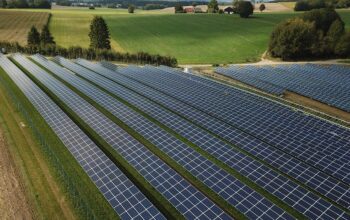Introduction To Sustainable Hardware Innovations
Sustainability has become a cornerstone of modern technology, with companies and industries striving to reduce their ecological footprint. From renewable energy solutions to sustainable manufacturing processes, we explore five hardware trends that are changing the environmental landscape.
Trend 1: Energy-Efficient Monitors and Displays
User-friendly and environmentally conscious hardware like Iiyama’s 63 Series Desktop Monitors are leading the way. These monitors are 100% mercury-free and utilize LED backlight technology, significantly reducing power consumption while maintaining stunning visual performance. This approach not only supports greener workplaces but also helps companies save on energy costs.
Trend 2: Smart Construction Materials
Green construction trends are emerging as a force in environmental sustainability. Technologies such as engineered timber and self-healing concrete are becoming popular choices in construction due to their durability and environmental benefits. These materials enhance a structure’s lifespan, reduce energy consumption, and decrease CO2 emissions, setting a new standard for sustainable building.
Trend 3: Innovative Packaging Solutions
Smart packaging is revolutionizing how we manage waste. New packaging materials can indicate the condition of perishable goods, reducing unnecessary waste and promoting more conscious consumption. This innovation encourages consumers to make sustainable choices while shopping.
Trend 4: Sustainable Polyurethane Solutions
BASF is pioneering sustainable polyurethane innovations, notably with products like Haptex, a synthetic leather solution. This technology reduces greenhouse gas emissions by up to 52% compared to traditional methods, along with significant reductions in water usage. Such solutions are enabling industries to transform sustainably.
Trend 5: Green Manufacturing Practices
Companies like Barco are integrating recycled materials into their products, such as the Barco ClickShare, which includes up to 30% recycled content. This approach not only conserves resources but also meets strict energy efficiency standards, demonstrating how technology and sustainability can harmonize in manufacturing processes.
These innovations represent a significant step toward creating a cleaner and more sustainable future, leveraging technology to protect our planet without sacrificing performance or efficiency.
Key Hardware Innovations Supporting Sustainability:
- Sustainable Materials: Engineered Timber, Self-Healing Concrete
- Energy Efficiency: LED Backlight Technology, Low Power Consumption Devices
- Smart Systems: Intelligent Packaging, Green Construction Software
- Circular Economy Practices: Recycled Materials in Manufacturing, Waste Reduction Technology
Benefits of Sustainable Hardware:
- Reduced Energy Consumption
- Lower Carbon Emissions
- Increased Resource Efficiency
- Waste Reduction and Recycling
- Promotes Sustainable Consumption and Production
As technology continues to evolve, these advancements play a crucial role in helping industries shift towards greener, more responsible practices that benefit both the environment and business operations.
References:
- https://www.midwich.com/news-and-events/blogs/sustainability-in-the-av-industry-world-earth-day-2025/
- https://www.globaltechaward.com/techbytes/detail/the-future-of-environmental-technology-innovations-for-a-sustainable-planet
- https://assets.ctfassets.net/v7uy4j80khf8/4bSxF8BKNl6hUDLGKWosCa/0b3a28c1e2ab398091d838dfbdf397b2/Full_Corporate_Questionnaire_Modules_1-6.pdf
- https://www.techinsights.com/blog/semiconductor-sustainability-predictions-2025
- https://www.basf.com/in/en/media/news-releases/in/2025/04/in-25-20
- https://www.pmi.com/resources/docs/default-source/pmi-sustainability/pmi-integrated-report-2024.pdf?sfvrsn=92e147c8_2
- https://www.worldconstructiontoday.com/pressreleases/5-green-construction-trends-for-2025-how-technology-is-leading-the-way/
- https://ilhadetoquetoque.com.br/en/tendencias-sustentaveis-e-inovacoes-tecnologicas-para-2025/



